Bleeding Disorders
A Factor VIII (FVIII) (or antihemophilic Factor A) deficiency or dysfunction leads to hemophilia A, which is an hereditary or congenital hemorrhagic disease.
Elevated concentrations of FVIII are observed in inflammatory or hepatic diseases and may be suggestive of an increased risk of venous thrombosis.
The FVIII concentration is increased during pregnancy.
* cf Dedicated instructions for use
-
BIOPHEN™ FVIII:C
Determination of Factor VIII activity (FVIII:C) in citrated human plasma or therapeutic concentrates.
Reference Registration Presentation 221402 CE-IVD R1: 2 x 2.5 mL
R2: 2 x 2.5 mL
R3: 2 x 2.5 mL
R4: 4 x 25 mL221406 CE-IVD R1: 2 x 6 mL
R2: 2 x 6 mL
R3: 2 x 6 mL
R4: 4 x 25 mL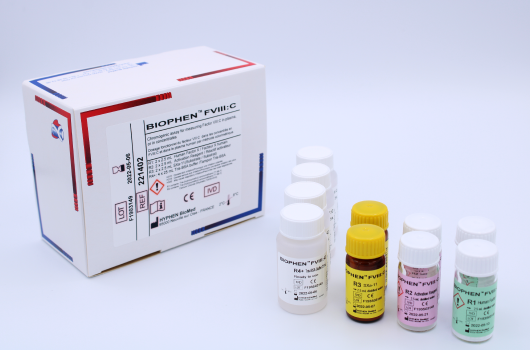
-
Factor VIII:C Deficient Plasma
Used in combination with CEPHEN™ (ref. CK511K – CK512K – CK515K – CK515L) to measure Factor VIII:C clotting activity in human citrated plasma, in the presence of cephalin, activator (aPTT reagent) and calcium.
Reference Registration Presentation DP040A CE-IVD 1 x 1 mL DP040K CE-IVD 6 x 1 mL 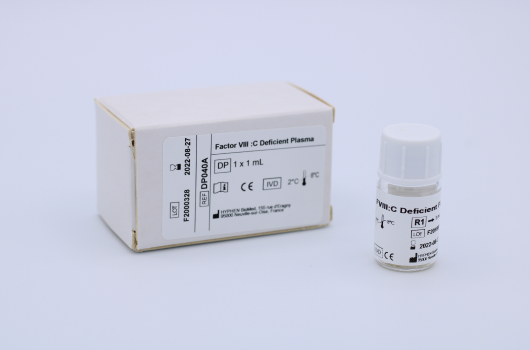
-
BIOPHEN™ FVIII variantDetermination of Factor VIII (FVIII) activity, in human citrated plasma or FVIII concentrates.
Reference Registration Presentation 227102 CE-IVD R1: 2 x 2.5 mL
R2: 2 x 2.5 mL
R3: 2 x 2.5 mL
R4: 4 x 20 mL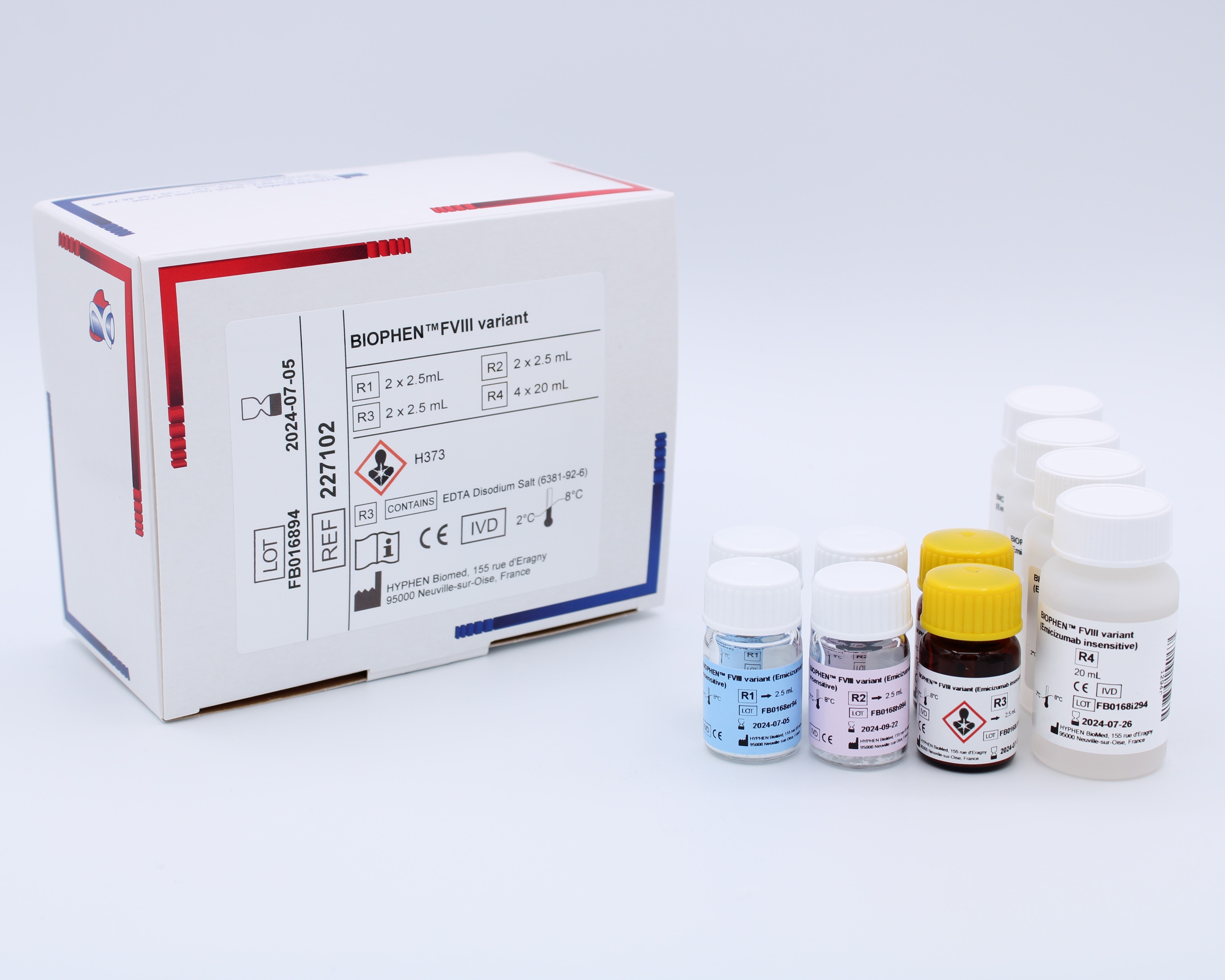
-
ZYMUTEST™ Anti-VIII MonoStrip IgG
Measurement of auto and allo-antibodies to FVIII, of the IgG isotype, in human plasma.
Reference Registration Presentation RK039A
on-demandCE-IVD 32 tests 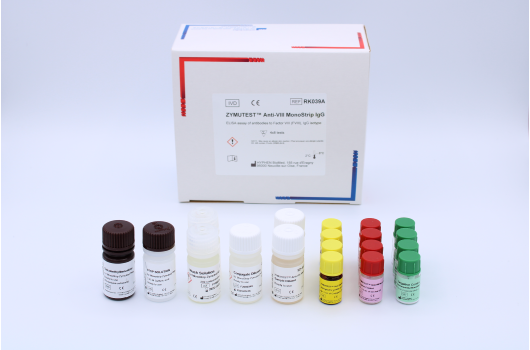
A Factor IX (FIX) (or antihemophilic Factor B) deficiency or dysfunction leads to the hemophilia B disease, an hereditary or congenital coagulation disorder. FIX levels are reduced in patients receiving anti-vitamin K treatment, or in diseases such as liver disorders, cirrhosis or DIC. High FIX concentrations may be suggestive of an increased risk of venous thrombosis.
* cf Dedicated instructions for use
-
BIOPHEN™ FIX
Determination of FIX activity in citrated human plasma or therapeutic concentrates.
Reference Registration Presentation 221801 CE-IVD R1: 2 x 1 mL
R2: 2 x 1 mL
R3: 2 x 1 mL
R4: 2 x 15 mL221802 CE-IVD R1: 2 x 2.5 mL
R2: 2 x 2.5 mL
R3: 2 x 2.5 mL
R4: 2 x 25 mL221806 CE-IVD R1: 2 x 6 mL
R2: 2 x 6 mL
R3: 2 x 6 mL
R4: 4 x 25 mL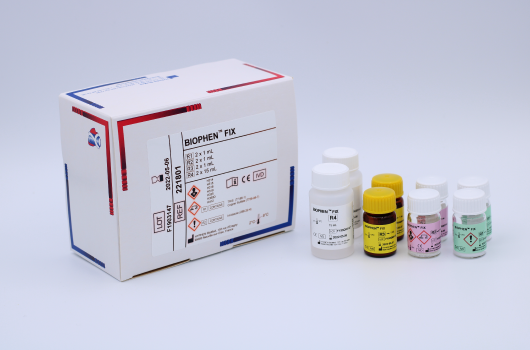
-
Factor IX Deficient Plasma
Used in combination with CEPHEN™ (ref. CK511K – CK512K – CK515K – CK515L) to measure FIX clotting activity in human citrated plasma, in the presence of cephalin, activator (aPTT reagent) and calcium.
Reference Registration Presentation DP050A CE-IVD 1 x 1 mL DP050K CE-IVD 6 x 1 mL 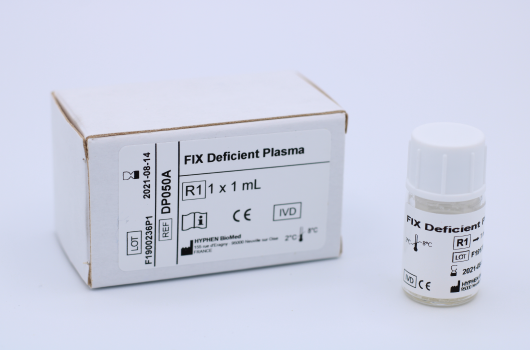
-
ZYMUTEST™ Factor IX
Measurement of FIX in human plasma, by Elisa.
Reference Registration Presentation RK032A RUO 96 tests 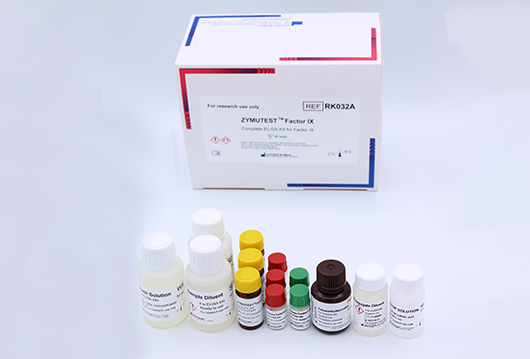
Willebrand's disease is the most common bleeding disorder. It concerns a group of various types of von Willebrand disease. vWF functional or quantitative deficiency allows characterizing von Willebrand disease, which can be classed into 3 types:
• Type 1: vWD is characterized by a partial quantitative deficit of vWF (most frequently).
• Type 2: vWD is characterized by an abnormal vWF adhesion activity. It is divided into 4 subtypes: 2A, 2B, 2M and 2N, depending on the multimers functional abnormality.
•Type 3: vWD is characterized by a severe quantitative vWF deficiency.
vWF deficiencies can be associated with various other pathologies, thus constituting an acquired von Willebrand disease. When vascular endothelium is affected, the vWF concentration can be increased in relation to inflammatory processes.
-
LIAPHEN™ vWF:AgLiquid and Ready to use
Measurement of von Willebrand Factor Antigen (vWF: Ag), in human citrated plasma, with a latex turbidimetric assay.
Reference Registration Presentation 120206 CE-IVD R1: 4 x 5 mL
R2: 4 x 6 mL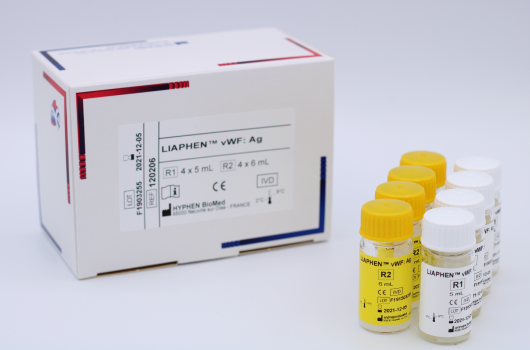
-
ZYMUTEST™ vWF
Measurement of von Willebrand Factor (vWF) in human plasma, by Elisa.
Reference Registration Presentation RK030A CE-IVD 96 tests 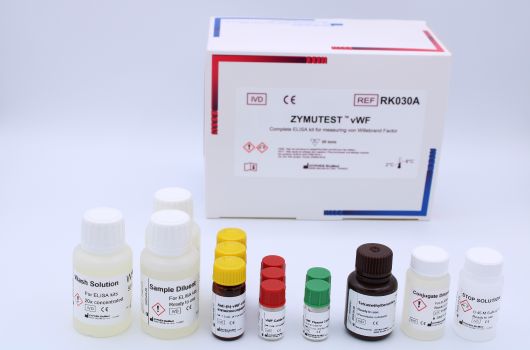
-
ZYMUTEST™ vWF:CBA
Measurement of human von Willebrand Factor (vWF) Collagen Binding Activity (CBA) in human activated plasma.
Reference Registration Presentation RK038A CE-IVD 96 tests 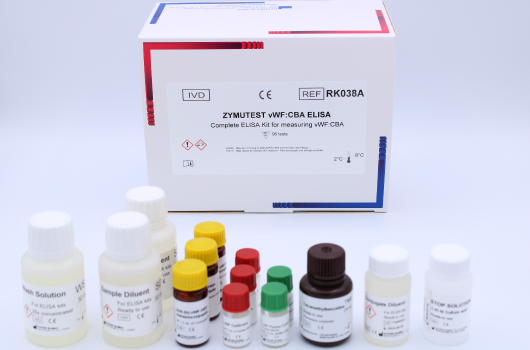
-
vWF Deficient Plasma
For any study or research protocol where a source of human vWF deficient plasma is required.
Reference Registration Presentation DP150K RUO 6 x 1 mL 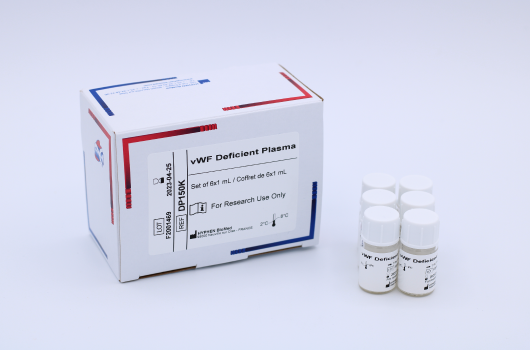
-
Factor XII Deficient Plasma
Used in combination with CEPHEN™ (ref. CK511K – CK512K – CK515K – CK515L) to measure FXII clotting activity in human citrated plasma.
Reference Registration Presentation DP080A CE-IVD 1 x 1 mL DP080K CE-IVD 6 x 1 mL 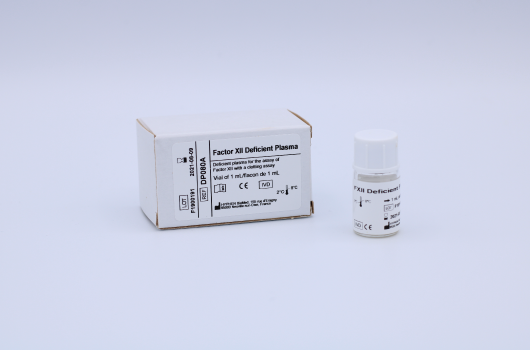
-
Factor XI Deficient Plasma
Used in combination with CEPHEN™ (ref. CK511K – CK512K – CK515K – CK515L) to measure FXI clotting activity in human citrated plasma.
Reference Registration Presentation DP070A CE-IVD 1 x 1 mL DP070K CE-IVD 6 x 1 mL 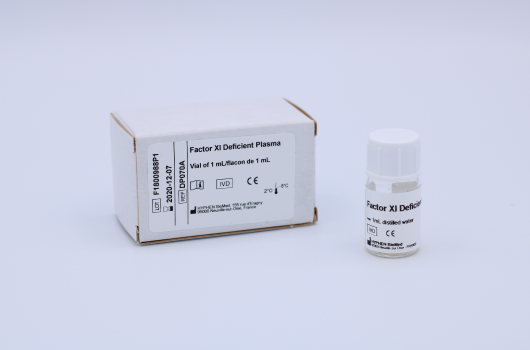
-
Factor VII Deficient Plasma
Used in combination with PT-Phen™ (ref. CK581 - CK582 - CK583 - CK584K - CK584L - CK586K - CK586L) to measure FVII clotting activity in human citrated plasma.
Reference Registration Presentation DP030A CE-IVD 1 x 1 mL DP030K CE-IVD 6 x 1 mL 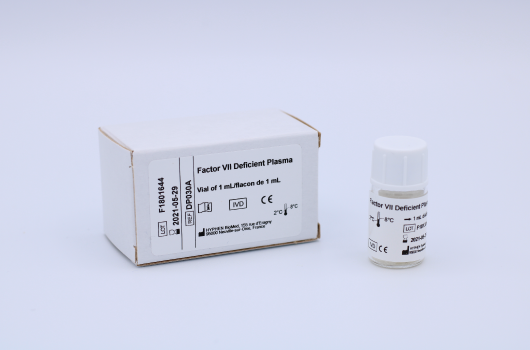
-
BIOPHEN™ FVII
Determination of FVII chromogenic activity in purified medium or citrated plasma.
Reference Registration Presentation 221304 RUO R1: 2 x 4 mL
R2: 2 x 2 mL
R3: 2 x 4 mL
R4: 4 x 25 mL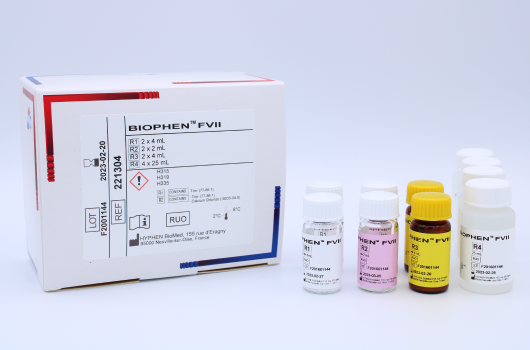
-
ZYMUTEST™ Factor VII
Measurement of FVII antigen in human plasma, by Elisa.
Reference Registration Presentation RK036A RUO 96 tests 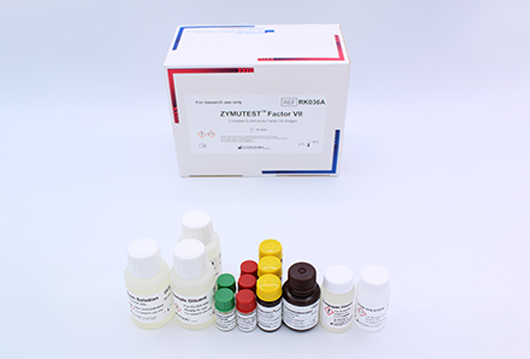
-
HEMOCLOT™ VII+X
Used in combination with PT-Phen™ (ref. CK581 - CK582 - CK583 - CK584K - CK584L - CK586K - CK586L) to measure FVII+FX clotting activity in human citrated plasma.
Reference Registration Presentation CK051K CE-IVD 6 x 1 mL CK051L CE-IVD 20 x 1 mL 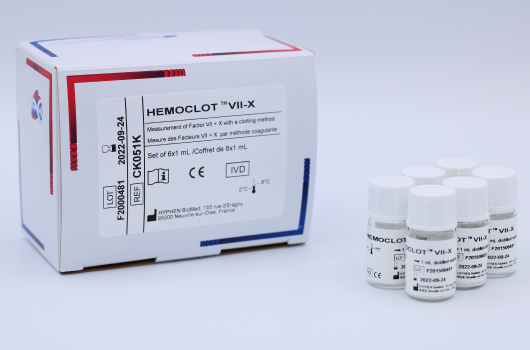
-
Factor X Deficient Plasma
Used in combination with PT-Phen™ (ref. CK581 - CK582 - CK583 - CK584K - CK584L - CK586K - CK586L) to measure FX clotting activity in human citrated plasma.
Reference Registration Presentation DP060A CE-IVD 1 x 1 mL DP060K CE-IVD 6 x 1 mL 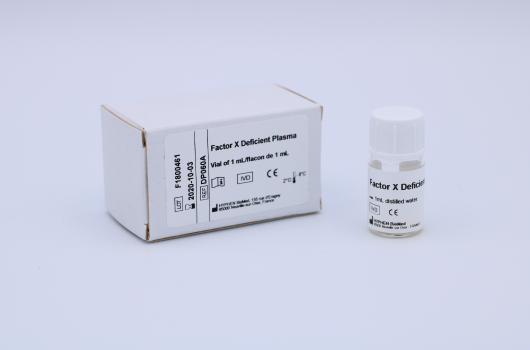
-
BIOPHEN™ Factor X
Determination of FX chromogenic activity in citrated human plasma.
Reference Registration Presentation 221705 RUO R1: 4 x 2.5 mL
R2: 4 x 2.5 mL
R3: 4 x 5 mL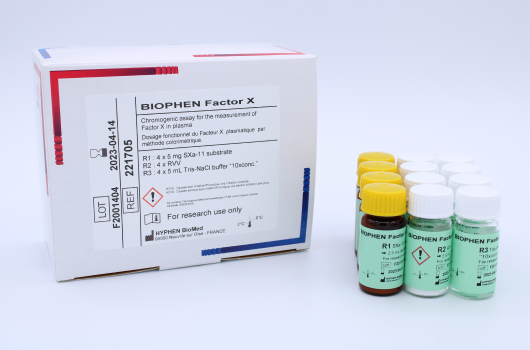
-
ZYMUTEST™ Factor X
Measurement of human FX antigen in human plasma, by Elisa.
Reference Registration Presentation RK033A RUO 96 tests 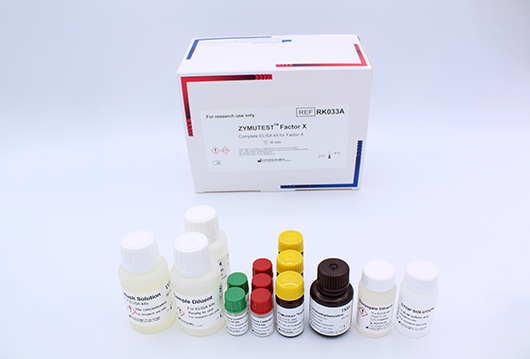
-
Factor II Deficient Plasma
Used in combination with PT-Phen™ (ref. CK581 - CK582 - CK583 - CK584K - CK584L - CK586K - CK586L) to measure FII or Prothrombin activity in human citrated plasma.
Reference Registration Presentation DP010A CE-IVD 1 x 1 mL DP010K CE-IVD 6 x 1 mL 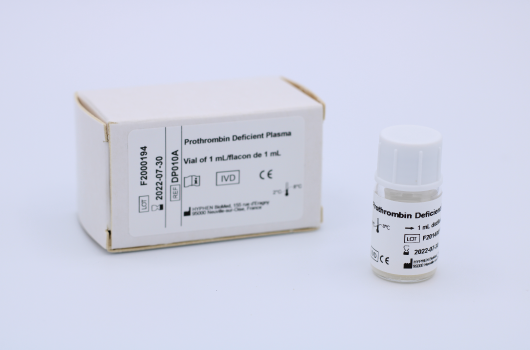
-
Factor V Deficient Plasma
Used in combination with PT-Phen™ (ref. CK581 - CK582 - CK583 - CK584K - CK584L - CK586K - CK586L) to measure FV or Proaccelerin activity in human citrated plasma.
Reference Registration Presentation DP020A CE-IVD 1 x 1 mL DP020K CE-IVD 6 x 1 mL 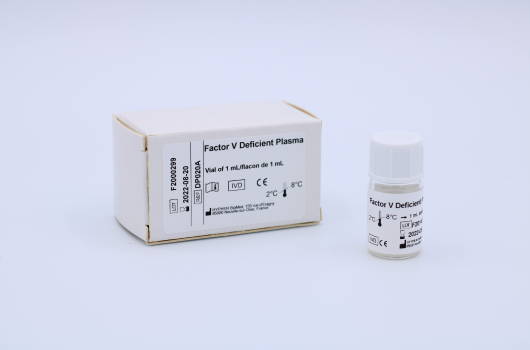
-
ZYMUTEST™ Factor V
Measurement of human FV antigen in plasma, by Elisa.
Reference Registration Presentation RK009A
on-demandRUO 96 tests 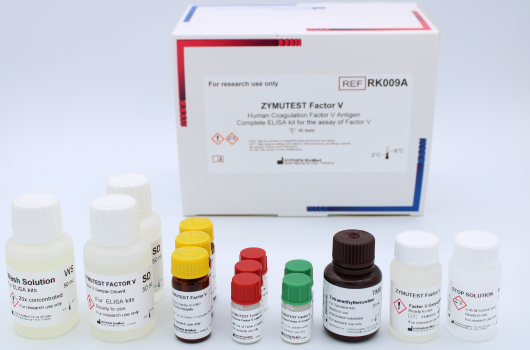
-
BIOPHEN™ Factor XIII
Determination of FXIII activity in human citrated plasma.
Reagent and material required: automatic instrument for chromogenic assays with a wavelength at 340 nm.Reference Registration Presentation 227005 CE-IVD R1: 3 x 4 mL
R2: 3 x 5 mL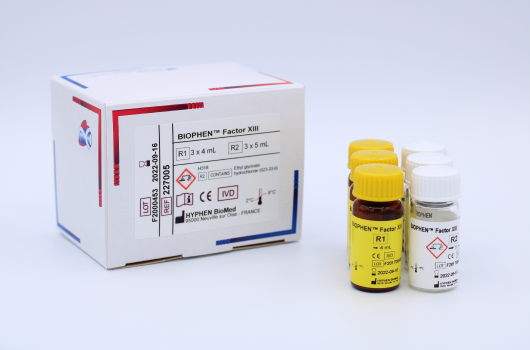
-
Factor XIII Deficient Plasma
For any study or research protocol where a source of human FXIII deficient plasma is required.
Reference Registration Presentation DP200K RUO 6 x 1 mL 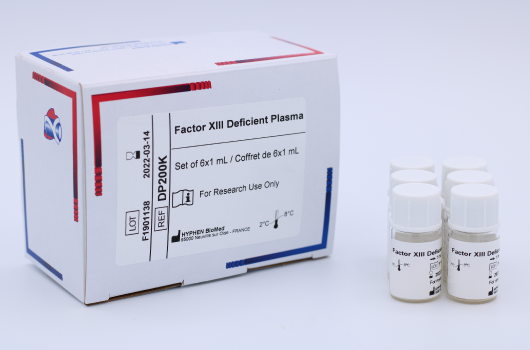
-
ZYMUTEST™ Factor XIII-A
Measurement of FXIII (subunit A) in human plasma, by Elisa.
Reference Registration Presentation RK034A
on-demandRUO 96 tests
